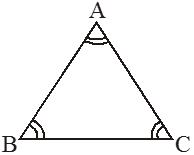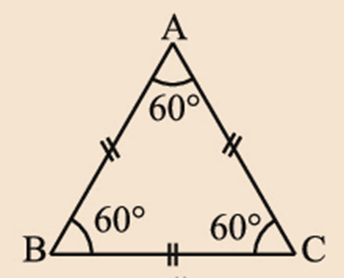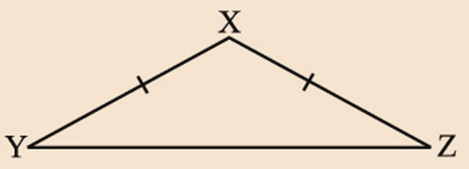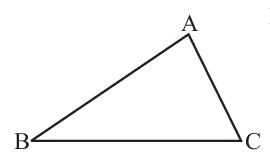- Books Name
- CBSE Class 7 Mathematics Book
- Publication
- Param Publication
- Course
- CBSE Class 7
- Subject
- Mathmatics
2. With respect to sides are:
(a) Scalene triangles (b) Isosceles triangles (c) Equilateral triangles
(a) Scalene Triangle: A triangle in which no two sides are equal in length is called a scalene triangle.
• Length of all sides and measurement of all angles is different.
(b) Isosceles Triangle

(i) Two sides have same length
(ii) The angles opposite to the equal sides are equal.
If in DABC, AB = AC then ∠B = ∠C this is an isoceles triangle.
Converse is also true
If in a triangle two angles are equal then sides opposite to equal angles are equal in length.
In , if ∠B = ∠C then AB = AC.
(c) Equilateral Triangle 
In an equilateral triangle
(i) All sides are equal in length.
(ii) Measurement of each angle is 60°.
In , if AB = BC = AC then ∠A = ∠B =∠C = 60°
or if then ∠A = ∠B = ∠C= 60° AB = BC = AC
- Books Name
- class 7 Mathematics Book
- Publication
- ReginaTagebücher
- Course
- CBSE Class 7
- Subject
- Mathmatics
Special triangles
Two Special Triangles: Equilateral and Isosceles
A triangle in which all the three sides are of equal lengths and each angle has measure 60o is called an equilateral triangle.

In an equilateral triangle,
AB = BC = CA
And ÐA = ÐB = ÐC = 600
A triangle in which two sides are of equal lengths is called an isosceles triangle

In triangle XYZ,
XY = XZ
Sum of the Lengths of Two Sides of a Triangle
The sum of the lengths of any two sides of a triangle is greater than the length of the third side.

In the above figure,
AB + BC > AC
Also, the difference between the lengths of any two sides of a triangle is smaller than the length of the third side.

 Param Publication
Param Publication
 ReginaTagebücher
ReginaTagebücher
